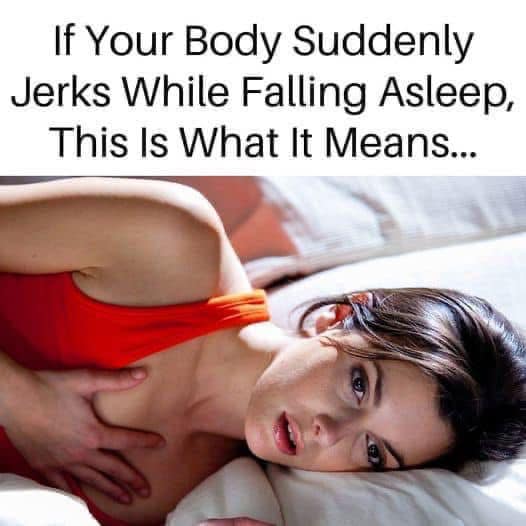The Mysterious Case of the Hypnic Jerk: Understanding Those Sleep Starts
We’ve all been there: that sudden jolt, that involuntary twitch that yanks you back to semi-consciousness just as you’re drifting off. These are hypnic jerks, also known as sleep starts, and while they can be unsettling, they’re a surprisingly common phenomenon, almost universally experienced at some point in our lives. But what exactly causes these sudden, unexpected muscle spasms? Let’s delve into the fascinating science behind these nocturnal surprises.
Unraveling the Mystery: Why Do Hypnic Jerks Occur?
The precise reasons behind hypnic jerks aren’t fully understood, but several compelling theories exist. It’s a complex interplay of physiological and neurological factors, and likely a combination of these contribute to the experience.
The Brain’s Misinterpretation: A Case of Mistaken Identity?
One prominent theory suggests that hypnic jerks arise from a simple misunderstanding within our brains. As we fall asleep, our muscles begin to relax. This relaxation can be misinterpreted by the brain as a sensation of falling. In response, a reflex action is triggered, causing the characteristic sudden muscle contraction. Think of it as a brief, involuntary “catch” to prevent a perceived tumble.
A Staggered Shutdown: The Asynchronous Sleep Process
Our brains don’t fall asleep all at once. Different parts of the brain transition into sleep at varying speeds. This asynchronous process might be a key factor in hypnic jerks. The mismatch in brainwave activity between different regions could trigger this involuntary muscular response.
Startle Reflex: An Evolutionary Echo?
Another possible contributor is our inherent startle reflex. A sudden noise, a change in temperature, or even an internal sensation can trigger this response. In the quiet transition to sleep, a minor internal stimulus might be enough to trigger this reflex, resulting in a hypnic jerk.
Evolutionary Roots: A Legacy from the Trees?
Some researchers propose an evolutionary explanation. Our primate ancestors, who often slept in trees, might have benefited from this reflex. A sudden movement during sleep could have triggered a hypnic jerk, preventing a potentially dangerous fall. While this is speculative, it adds an intriguing layer to the mystery.
How to Minimize Those Unwanted Jolt-Awakens
While hypnic jerks are generally harmless, they can be disruptive to sleep. Thankfully, several strategies can help reduce their frequency and intensity.
Creating a Sleep Sanctuary: Optimizing Your Sleep Environment
A calm and relaxing sleep environment is crucial. This includes minimizing noise and light pollution, ensuring a comfortable temperature, and creating a tranquil atmosphere conducive to restful sleep. Consider using earplugs, an eye mask, or calming aromatherapy.
Lifestyle Adjustments: Setting the Stage for Better Sleep
Several lifestyle modifications can contribute to reduced hypnic jerks. This includes establishing a consistent sleep schedule, limiting caffeine and alcohol intake before bed, and avoiding strenuous exercise close to bedtime.
Stress Management Techniques: Taming the Inner Storm
Stress and anxiety are frequently linked to increased hypnic jerk frequency. Implementing relaxation techniques, such as deep breathing exercises, meditation, or progressive muscle relaxation, can significantly help.
Nutritional Considerations: The Role of Magnesium
Magnesium plays a vital role in muscle relaxation. Some studies suggest that magnesium supplementation may reduce the occurrence of hypnic jerks. However, it’s crucial to consult a healthcare professional before starting any new supplements.
Seeking Professional Help: When to Consult a Doctor
If hypnic jerks are significantly impacting your sleep quality or are accompanied by other concerning symptoms, it’s essential to seek professional medical advice. A doctor can help rule out any underlying medical conditions and suggest appropriate interventions.
In conclusion, hypnic jerks are a common, mostly benign sleep phenomenon with several potential explanations. By understanding their possible causes and implementing some simple lifestyle changes, you can potentially minimize their disruptive effect and improve your overall sleep quality.
